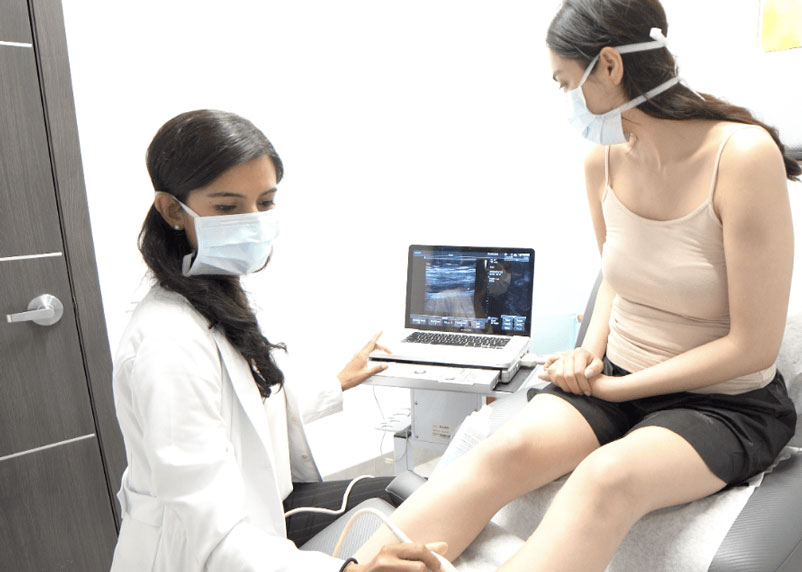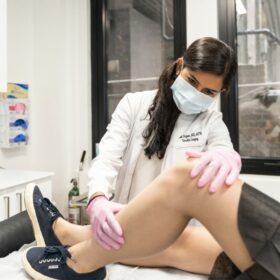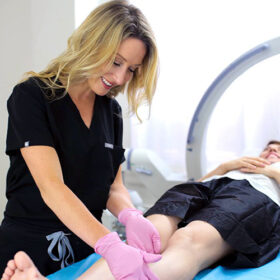You might have heard of spider veins, those small, red, blue, or purple veins that tend to appear on the legs and face. They are not only unsightly, but they can also cause discomfort and embarrassment. Do you want to know what causes spider veins and the risk factors that increase their likelihood? This article answers those questions.
Vein Treatment Clinic is a group of state-of-the-art vein clinics dedicated to offering cutting-edge, minimally invasive treatments for spider veins and varicose veins. Our vein doctors use advanced duplex ultrasound tests to visualize the direction of blood flow in your leg veins, identify the root cause of your vein problems, and curate a personalized minimally invasive vein treatment plan. We have offices across the US, including New York, New Jersey, Long Island, California, and Maryland. If you’re in or around the DMV, you can visit our vein center at 10215 Fernwood Rd, Suite 301, Bethesda. Please schedule an appointment at your nearest vein treatment clinic.
What are Spider Veins?
Spider veins are small, dilated blood vessels that form close to the surface of the skin. They often have a web-like appearance, hence the name “spider veins.” They are most commonly found on the legs and face, but can occur anywhere on the body.
What Causes Spider Veins?
In some cases, spider veins are completely cosmetic, and there’s no clear root cause. But in many cases, spider veins are symptomatic of chronic venous insufficiency, a dangerous circulatory disorder wherein the collapse or malfunctioning of vein valves leads to backward blood circulation due to gravity. When your vein valves collapse, gravity forces blood to flow back down and accumulate in the leg veins, eventually leading to dilated spider veins that appear on the skin’s surface.
Risk Factors for Spider Veins
- Age: As you grow older, the veins lose their elasticity and become more fragile, increasing your risk of developing spider veins.
- Family history: If your parents or other close relatives have had spider veins, you are more likely to develop them as well.
- Gender: Women are more likely to develop spider veins than men due to hormonal changes during pregnancy and menopause.
- Occupation: People who have jobs that require prolonged standing or sitting are at a higher risk of developing spider veins.
- Lifestyle: A sedentary lifestyle, poor diet, and lack of physical activity can all increase your risk of developing spider veins.
- Previous injury or surgery: Previous injuries to the legs or surgery in the legs can increase the likelihood of developing spider veins.
- Prolonged standing or sitting: This can put pressure on the veins and lead to their damage over time.
- Hormonal changes: Hormonal changes, such as those during pregnancy, menopause, and hormonal replacement therapy, can cause an increase in the levels of certain hormones in the body, which can lead to the formation of spider veins.
- Sun exposure: UV rays from the sun can cause damage to the skin and blood vessels, leading to the formation of spider veins.
- Weight gain: Excessive weight gain can put extra pressure on the veins and cause vein disease.
Preventing Spider Veins
While it’s not possible to prevent spider veins entirely, there are certain steps you can take to reduce your risk of developing them. Some of these steps include:
- Exercise regularly: Regular physical activity can improve circulation and reduce the likelihood of developing spider veins.
- Maintain a healthy weight: Keeping your weight in check can reduce the pressure on your veins and prevent the formation of spider veins.
- Wear compression stockings: Compression stockings can improve circulation and reduce the pressure on your veins, reducing your risk of developing spider veins.
- Avoid prolonged standing or sitting: If your job requires prolonged standing or sitting, take breaks every hour to move around and stretch.
Should I Get My Varicose Veins Treated?
If you have spider veins or varicose veins, you might be considering whether to have them treated. The answer is a resounding YES! Here’s why:
- Improve appearance: Varicose veins can be unsightly and can affect your self-esteem. Treatment can improve the appearance of your skin, giving you more confidence and a more youthful look.
- Relieve discomfort: In some cases, spider veins and varicose veins can cause discomfort, such as aching, itching, and burning. Treatment can relieve these symptoms, making you more comfortable.
- Prevent complications: If left untreated, varicose veins can lead to more serious conditions, such as blood clots and skin ulcers. Treatment can prevent these complications and protect your health.
- No downtime: Many varicose vein treatments are minimally invasive and do not require any downtime. You can return to your normal activities immediately after treatment.
What Happens if Spider Veins are Left Untreated?
If you have spider veins, it is important to have them treated promptly. If left untreated, spider veins can lead to the following complications:
- Pain and discomfort: Spider veins can cause aching, itching, burning, and swelling in the affected area. These symptoms can become more severe over time.
- Skin damage: Over time, the increased blood flow in the veins can cause damage to the surrounding skin. This can lead to skin discoloration, itching, and ulceration.
- Blood clots: If left untreated, spider veins can increase the risk of developing blood clots, which can be dangerous and even life-threatening.
- Worsening of symptoms: If left untreated, spider veins can worsen over time, leading to more pronounced veins and greater discomfort.
- Development of varicose veins: If left untreated, spider veins can progress to varicose veins, which are larger and more painful veins that can cause serious health complications.












